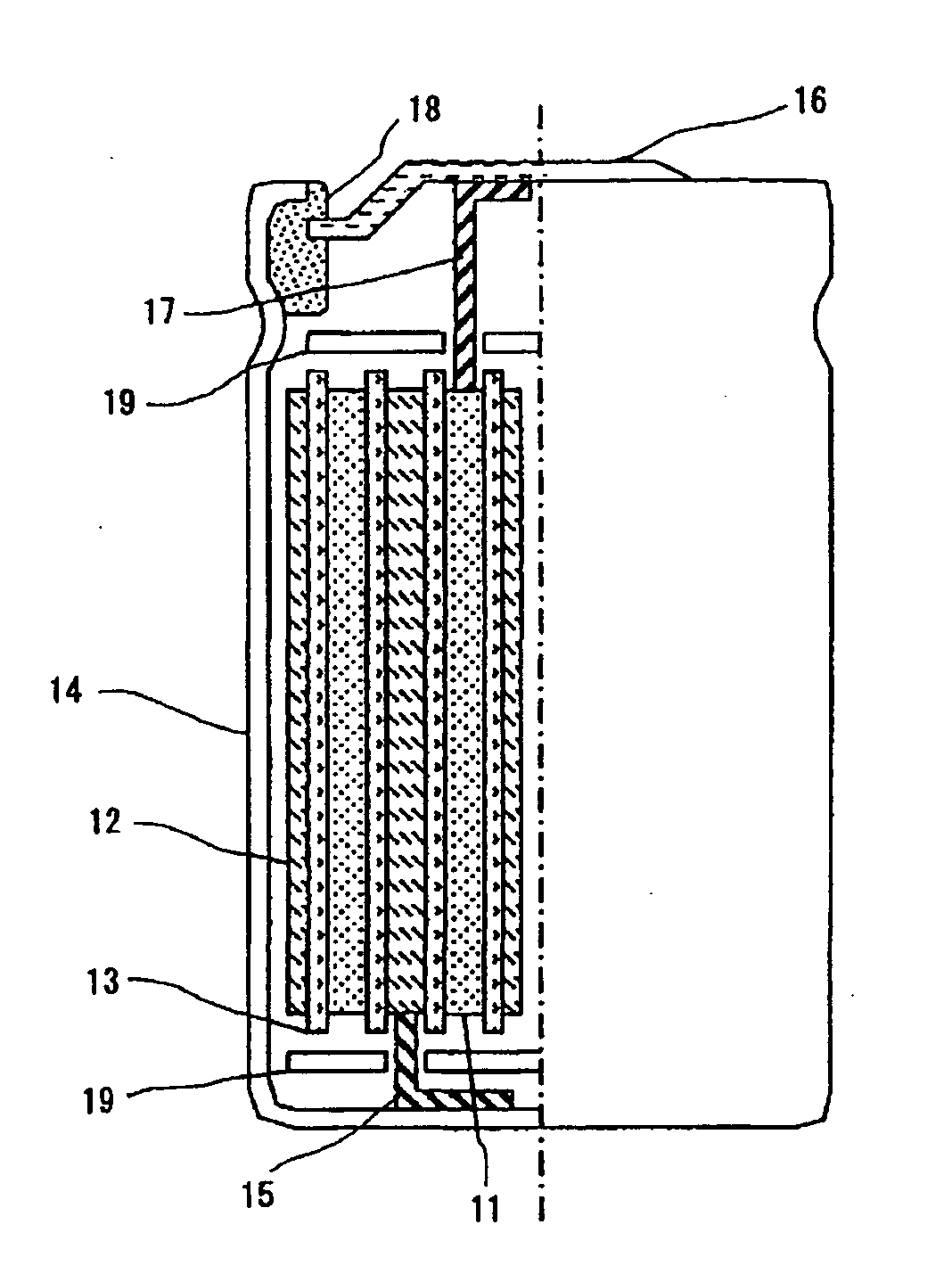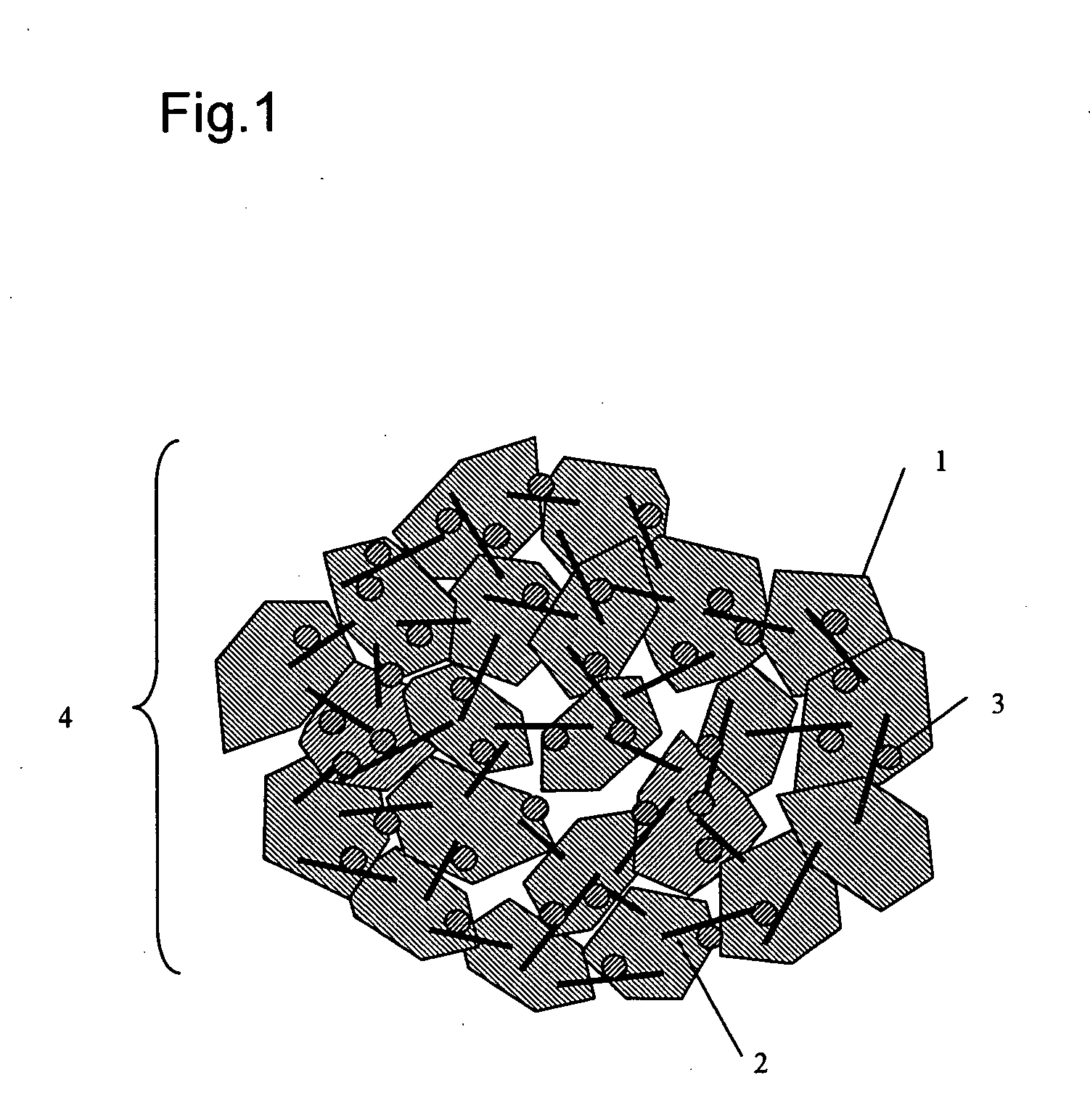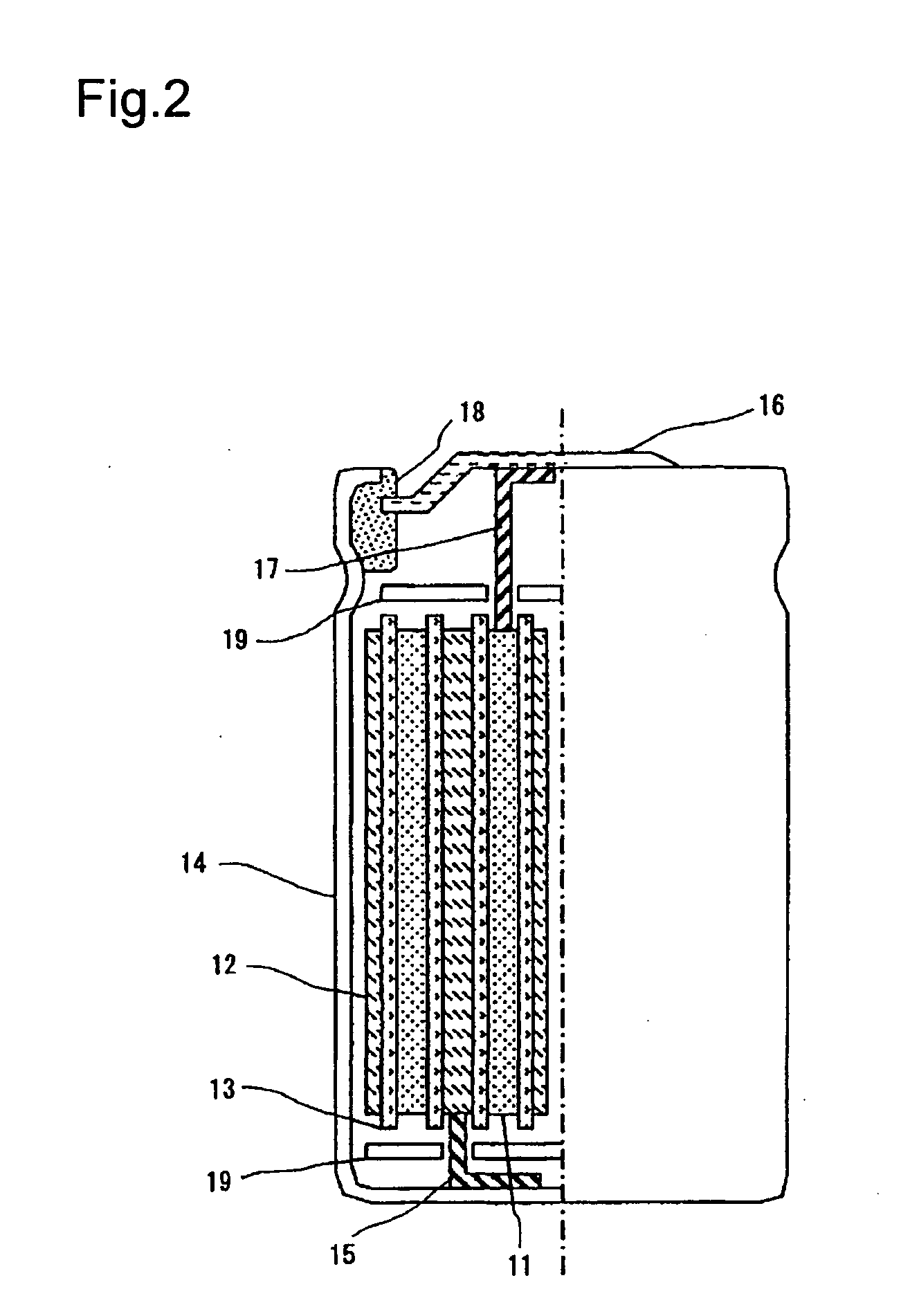Positive electrode material for lithium secondary battery, positive electrode plate for lithium secondary battery, and lithium secondary battery using the same
positive electrode technology, applied in the direction of cell components, electrochemical generators, nickel compounds, etc., can solve the problems of difficult penetration of solvated lithium ions into the inner space of hollow carbon fibers, high electric resistance of the positive electrode material of a lithium secondary battery, and difficulty in achieving preferred output power characteristics. , to achieve the effect of excellent electron conductivity in the electrode, excellent input/output power characteristic, and low resistan
- Summary
- Abstract
- Description
- Claims
- Application Information
AI Technical Summary
Benefits of technology
Problems solved by technology
Method used
Image
Examples
example 1
[0043]Firstly, a method of manufacturing a positive electrode active material will be described. Manganese dioxide, cobalt oxide, nickel oxide, and lithium carbonate are used as source materials. The materials were weighed such that the atomic ratio of Ni:Mn:Co is set to 1:1:1, and the atomic ratio of Li:(NiMnCo) is set to 1.06:1, and then, pure water was added. Using a pot made of resin and a ball mill with a zirconia ball, the materials are pulverized and mixed in a wet environment for five to an hundred hours so that the particle diameter was reduced to a submicron scale. A polyvinyl alcohol (PVA) liquid was added to a mixture with a solid content ratio of 2 wt. %, mixed again for an hour, and granulated and dried using a spray drier, so that particles having a diameter of 5 to 20 μm in average were produced. Subsequently, these particles were baked at a temperature of 1000° C. for three to ten hours so as to form a layered crystal structure, and then decomposed to provide a posi...
example 2
[0062]In Example 2, a compact cylindrical battery was manufactured through the following procedures in order to evaluate the life cycle characteristic of a combined positive electrode material. The positive electrode plate manufactured using a combined positive electrode material of No. 3 according to Example 1 was cut away to have a width of 5.4 cm and a length of 50 cm, and a lead made of an aluminum foil is welded to it to extract currents, so that a positive electrode plate was manufactured.
[0063]Subsequently, a negative electrode plate was manufactured to provide a compact cylindrical battery (as shown in FIG. 2) by assembling the positive and negative electrode plates. Pseudo isotropic carbon (hereinafter, referred to as PIC) corresponding to amorphous carbon of a negative electrode material was dissolved into an aggregating agent, NMP, to provide negative electrode mixture slurry. In this case, a dried weight ratio between the PIC and the aggregating agent was set to 92:8. Th...
example 3
[0067]In Example 3, manganese dioxide, cobalt oxide, and nickel oxide, and lithium carbonate were used as a source material. Materials were weighed such that the atomic ratio of Ni:Mn:Co is set to 0.6:0.2:0.2, and the atomic ratio of Li:(NiMnCo) is set to 1.03:1, and then, pure water was added. Using a pot made of resin and a ball mill made of a zirconia ball, the materials are pulverized and mixed in a wet environment so that the particle diameter is reduced to a submicron scale. A polyvinyl alcohol (PVA) liquid is added to a mixture with a solid content ratio of 0.2 wt. %, mixed again for an hour, and granulated and dried using a spray drier, so that particles having a diameter of 5 to 100 μm were produced. Subsequently, these particles were baked at a temperature of 1000° C. for twenty to fifty hours so as to have a layered crystal structure, and then decomposed to provide a positive electrode active material. Bulky particles having a diameter of 50 μm or more are removed from th...
PUM
| Property | Measurement | Unit |
|---|---|---|
| diameter | aaaaa | aaaaa |
| particle diameter | aaaaa | aaaaa |
| length | aaaaa | aaaaa |
Abstract
Description
Claims
Application Information
 Login to View More
Login to View More - R&D
- Intellectual Property
- Life Sciences
- Materials
- Tech Scout
- Unparalleled Data Quality
- Higher Quality Content
- 60% Fewer Hallucinations
Browse by: Latest US Patents, China's latest patents, Technical Efficacy Thesaurus, Application Domain, Technology Topic, Popular Technical Reports.
© 2025 PatSnap. All rights reserved.Legal|Privacy policy|Modern Slavery Act Transparency Statement|Sitemap|About US| Contact US: help@patsnap.com



